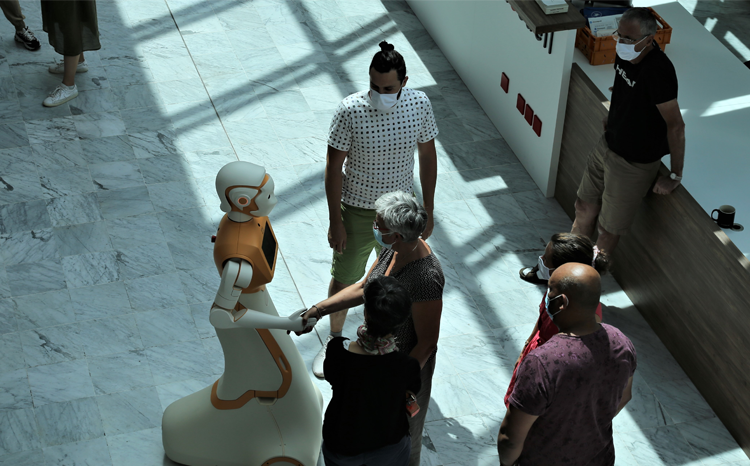Vine robots could transform cancer treatment, shows Leeds study
- 2 August 2024

- Robots that mimic creeping vine plants could transform cancer diagnosis and treatment, according to a study by University of Leeds
- The “magnetic vine robots” developed by Leeds researchers grow as they move and can squeeze through gaps almost 40% thinner than their resting diameter
- The research director described the robots as "a significant advancement in surgical navigation technology that could benefit millions of people"
Robots with magnetic skin and movement that mimics creeping vine plants could transform cancer diagnosis and treatment, according to a study by University of Leeds.
The “magnetic vine robots” developed by Leeds researchers grow as they move and can squeeze through gaps almost 40% thinner than their resting diameter, enabling them to navigate narrow, complex pathways deep inside the human body, such as the bronchial tree, reported the University of Leeds on 29 July 2024.
By magnetising their ‘skin’ and controlling them using external magnets, academics says the small plastic robots are so manoeuvrable they can navigate an ‘S’ bend, meaning they could potentially be used to treat tumours in the deepest, most difficult-to-reach parts of the lungs.
Professor Pietro Valdastri, director of the university’s STORM Lab and research supervisor, said: “There are a number of current procedures that could greatly benefit from this technology in the future.
“For example, current technologies to look inside a patient’s lungs or take samples – a bronchoscopy – cannot easily reach most of the airways because it is so difficult to navigate the instrument by pushing it into the patient’s body.
“The difficulty of the procedure limits capacity in the healthcare system, resulting in long waiting lists and likely progression of the disease.”
He added that the robots represent a “significant advancement in surgical navigation technology that could benefit millions of people”.
The devices are directed by external magnets which apply forces to the magnetic particles, causing the robot to change shape or direction – enabling it to manoeuvre through the tiny tubes of the lungs to the site of a suspicious lesion.
Once at the target location, the robot could be used to take a tissue sample or deliver treatment, which could ultimately lead to better treatment outcomes, the research suggests.
The report’s lead author Josh Davy, said: “A surgeon pushing a catheter through the body creates friction and discomfort but because of the way these robots move by growing, there is no friction, meaning they can move through difficult pathways easily and they’re less likely to damage surrounding tissue.
“Also, many cavities in the body are collapsed – such as in the brain or in the gastrointestinal tract – and we need a way to expand them, to enable navigation.
“These robots can open up a collapsed tube – which others can’t do. And once they’ve grown, you’ve got a channel that you can then put tools or a camera down, so they have much greater potential”.




